Among the many gratifying moments we have as wine lovers, filling the 12 slots of a cardboard box with coveted bottles from a wine shop ranks pretty high. It is like choosing your own Christmas gifts. We might enlist something bold for a special dinner we’re cooking, have a few aromatic whites on hand to elevate a mundane evening, or we might stock-up on a sparkler or two to heal the eventual wounds of a brutal day at work. The methodology for assembling such a mixed case is not unlike how I approach my annual list of the year’s top wines. Therefore, this year, we may as well shift the format from a 10 Best to a Top 12. The selections might be confined to mostly Italy and France, but those ubiquitous wine nations have the goods, and I’m here to spread the joy from what they taught me this year.
Far too often, wine criticism reads like a soulless technical read-out of a commodity. Sure, I usually qualify the wines I taste with a score, but I leave room for the fondness that develops over time: those smudgy fingerprints that only a great wine can leave on your heart.
Far too often, wine criticism reads like a soulless technical read-out of a commodity. Sure, I usually qualify the wines I taste with a score, but I leave room for the fondness that develops over time: those smudgy fingerprints that only a great wine can leave on your heart. In fact, that word — joy — is particularly apt in 2020, in part because there wasn’t much of it. The coronavirus pandemic will, for many of us, be a turning point in our lives. Like a persistent low-grade panic attack, it altered our every interaction. Finding space to explore joy — even little shards of it — became paramount.
With that in mind, these are the 12 wines that gave me the greatest joy and they are ordered by the intensity of that feeling. Far too often, wine criticism reads like a soulless technical read-out of a commodity. Sure, I usually qualify the wines I taste with a score, but I leave room for the fondness that develops over time: those smudgy fingerprints that only a great wine can leave on your heart. And so we have Punta Crena’s Lumassina, a wine that — at least, on a technical level — has no business being ahead of Domaine Zind-Humbrecht’s Pinot Gris from the Clos Saint Urbain of Alsace’s Grand Cru Rangen de Thann. The latter carried the gravitas of history and fascinated me with its tones; but the former put a bigger smile on my face. Regardless, they both made it into my figurative cardboard box.
Now … to find a willing retail partner to help me deliver this case. Then we’d really be spreading the joy. Maybe next year?
Note: Not all of these wines are current releases.
Navigate This List
- No. 12: A swoon-worthy Sangiovese
- No. 11: An iconic Pinot Gris
- No. 10: A Spanish white blend
- No. 9: A fun little Frizzante
- No. 8: A bottle of Piedmont’s future
- No. 7: A wine from Burgundy’s most esteemed Village
- No. 6: A traditional perspective on Etna
- No. 5: A near-perfect Barolo
- No. 4: A sterling example of Beaujolais Cru
- No. 3: An Aligoté of uncompromising beauty
- No. 2: An oak-aged Champagne of bottomless depth
- No. 1: A Nebbiolo delle Alpi that inspires
- 2016 Donatella Cinelli Colombini Casato Prime Donne Rosso di Montalcino

The mixed case starts off with a wine demonstrating how this joy-before-grandeur approach played out at times this year: the 2016 Rosso di Montalcino from Donatella Cinelli Colombini. While Colombini’s 2014 Brunello di Montalcino (also tasted this year) was an exquisite wine with better potential for aging and more complexity, the Rosso would be the one I’d grab off the shelf. No other wine in the realm of Sangiovese matched this Rosso’s brilliant exuberance.
Lightly tannic and colored by sensations akin to red cherries, tangerine and baking spice, Colombini’s Rosso di Montalcino still managed to convey the meatiness that Montalcino is known for — just with a delicacy I preferred. Montalcino’s wines typically flex their muscles; this one aspired to be nothing more than a vibrant dancer finding its groove.
Every mixed case needs a few value wines to ground them to reality, and since you can score this wine for around $25 (making it one of Italy’s best-value red wines) its the first in the box.
*Learn more about these icons.
Imported by Banville Wine Merchants
Other Noteworthy Wines We Tasted in This Style/Mood:
- 2016 Padeletti Rosso di Montalcino
- 2016 Donatella Cinelli Colombini Brunello di Montalcino
- 2019 Coltusboni “Colmaia” Sangiovese Toscana
- 2017 Bibi Graetz “Testamatta” Toscana Rosso
- 2016 Ronchi di Cialla Ribolla Nera Friuli Colli Orientali
- 2016 Tenuta Scerscé “Nettare” Rosso di Valtellina
- 2018 Giuseppe Cortese Barbera d’Alba
- 2015 Cavalier Bartolomeo “Enfant” Langhe Rosso
- 2016 Domaine Maestracci E Prove Rouge Corse Calvi
- 2016 Clos Bellane Côtes du Rhône Villages Valréas Rouge
- 2010 Domaine Zind-Humbrecht Clos Saint Urbain Grand Cru Rangen de Thann Alsace Pinot Gris

One of the year’s most fascinating wines came from one of the wine world’s most complex terroirs with a tangled backstory story of volcanoes, war, abandonment and resurrection. (Oh, and a winemaker who is a Master of Wine).
Domaine Zind-Humbrecht’s Pinot Gris from the Clos Saint Urbain of Alsace’s Grand Cru Rangen de Thann is a wildcard year-in, year-out. Depending on conditions, it can be vinified dry or sweet, with the 2010 ending up sweet. This steeply pitched plot is a case study of nature’s whims, and for those of you passionate about Alsatian wine, it is a “must” for your wine-drinking bucket list.
This version of the Clos Saint Urbain Pinot Gris left me fumbling for words. How can a white wine so rich and substantial still convey elements of whispery smoke and delicate tea at the same time? How does that long finish manage to be mineral and leathery and fruity for a whole minute after leaving the palate? In fact, my tasting notes on the wine had more question marks than periods. After discussing the wine and this peculiar vineyard with winemaker Olivier Humbrecht MW (view the article), I realized that the Pinot Gris from the Clos Saint Urbain cannot be seen as a vintage, but rather as an episodic book. The 2010 was merely a chapter — a glimpse of its ever-changing story. But like any epic, you cannot fully grasp it by reading one chapter, you have to read it all at once in a sequence. Good luck acquiring the wines to do that.
And so, the Clos Saint Urbain will be filed under the heading “The Unknowables of Wine” … and I’m perfectly fine with that.
*Learn more about these icons.
Imported by Kobrand Wine & Spirits
Other Noteworthy Wines We Tasted in This Style/Mood:
- 2010 Domaine Zind-Humbrecht Clos Saint Urbain Grand Cru Rangen de Thann Alsace Gewurztraminer
- 2017 Domaine Maurice Schoech Harmonie “R”
- 2016 Wolfberger Grand Cru Rangen de Thann Alsace Riesling
- 2011 Badia a Coltibuono Vin Santo del Chianti Classico
- 2017 Clos Mogador “Nelin” Priorat Blanco
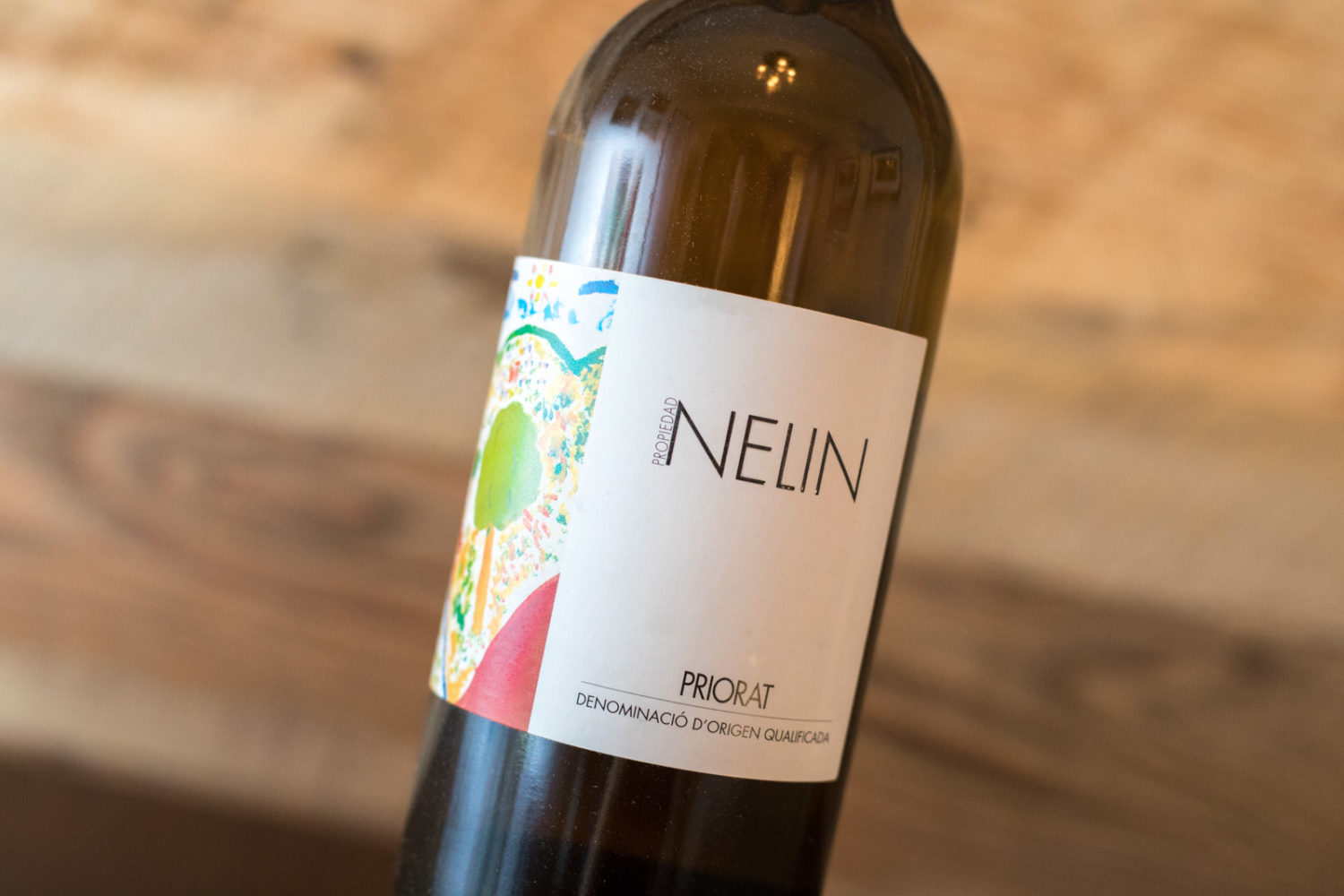
My home-bound wine adventures this year included a few white-wine forays down typically red-wine-stained avenues: notably Timorasso in Piedmont (see No. 8), Ansonica from Tuscany, and this white blend from Priorat.
In July, I wrote about how “delightfully disorienting” Clos Mogador’s Nelin was, adding that “it was like holding a compass that went berserk, at various times pointing at the Rhône, Meursault and even Jerez.” There was a brilliant thread of fruit to this wine that urged full surrender: it was as though the wine spoke up and told me to chill the heck out. Much of this came from the blend’s Grenache Blanc, which lent the wine a vivid peach and white-blossom tone. But Nelin’s comforting texture undoubtedly came from the nine months it spent resting on the lees.
And now a mini-rant: The popular expectation for white wine is that it must be crisp. A zing-and-forget-it profile that gets the job done but limits the imagination. I wish wine drinkers would seek out white wines like Nelin more often. We’d hear far fewer people claim that tired old line of “I prefer red to white.”
*Learn more about these icons.
Imported by Europvin
Other Noteworthy Wines We Tasted in This Style/Mood:
- 2016 Domaine La Rémèjeanne Les Arbousiers Côtes du Rhône
- 2017 Ogier Clos de L’Oratoire des Papes Châteauneuf-du-Pape Blanc
- 2017 Maison en Belles Lies Santenay Blanc
- 2018 Domaine du Roc des Boutires Aux Bouthières Pouilly-Fuissé
- 2017 Bibi Graetz “Bugia” Toscana Bianco
- 2017 Bibi Graetz “Colore” Toscana Bianco
- 2018 Punta Crena Lumassina Frizzante
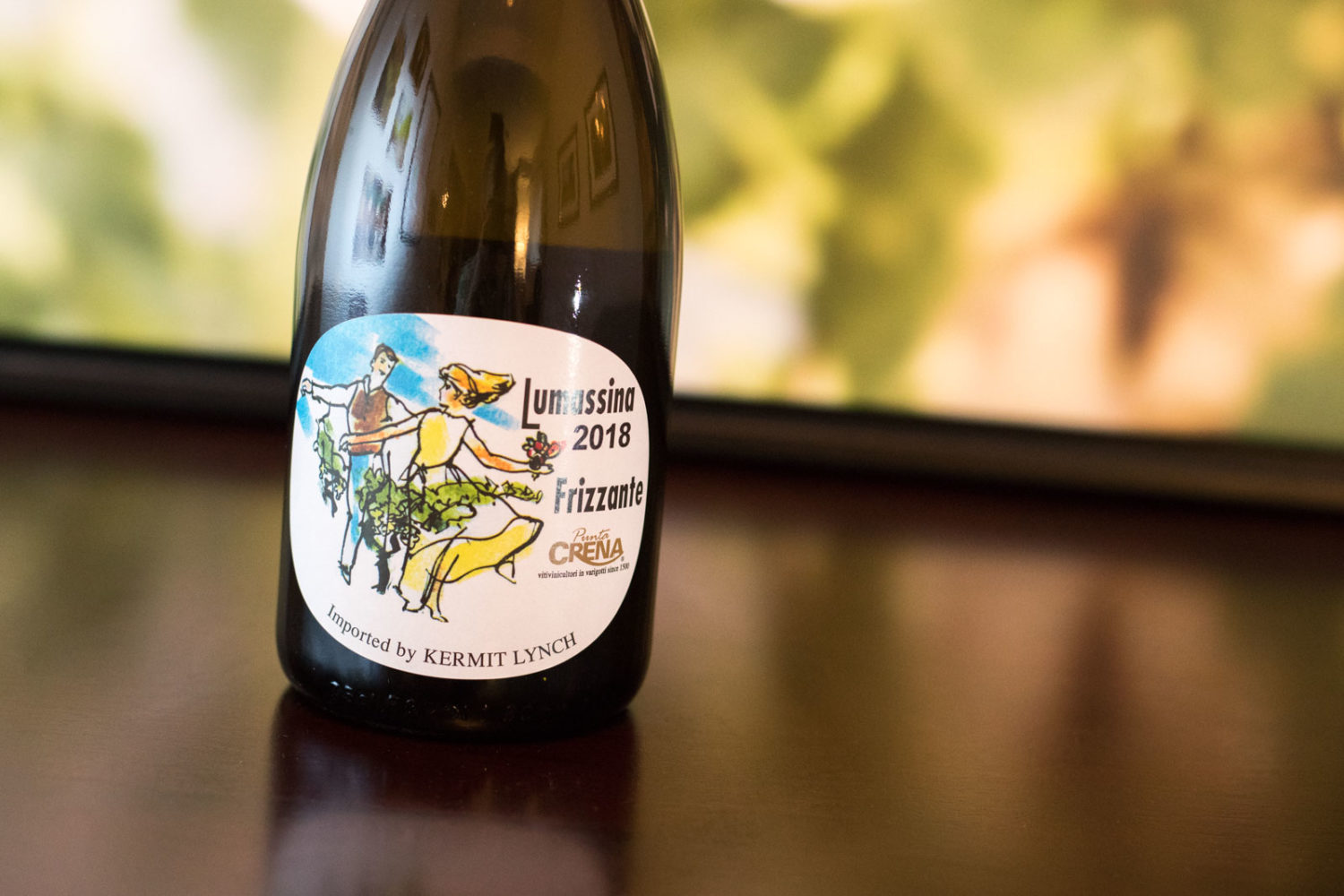
Never mind that this wine’s label makes it look like a cheap jug wine from the ’90s — this was the most fun I had drinking anything all year. It was so fun, in fact, that I did something I rarely do: I bought it a second time (“so many wines, so little time” is my usual mantra).
Lumassina is limited to Italy’s Ligurian coast west of Genoa where it is often used to bolster Pigato and Moscato Bianco. In fact, it is so hyper-local that its name derives from a local pairing — snails. I didn’t get the chance to try such a luxury here in Colorado. (Snails aren’t crazy about our smoky skies and lack of rain, but that’s another matter).
Punta Crena clearly gives Lumassina the care it deserves, and the result is a whimsical joyride that will have you dreaming of a post-pandemic foray to the Mediterranean Sea. Their version has a lightness thanks to frizzante bubbles and the grape’s pop of muscat-like fruit. There is also a touch of saltiness on the finish, which lends it beautifully to seafood pasta.
This wine is a blast in a bottle, and at $20, it brings this fantasy mixed case’s price back down to earth (although, at a certain point here, we’re just going to stop caring about price because it is still 2020 and there’s no time for tomorrow).
*Learn more about these icons.
Imported by Kermit Lynch Wine Merchants
Other Noteworthy Wines We Tasted in This Style/Mood:
- 2018 Punta Crena Vigneto Ca da Rena Riviera Liguria di Ponente Pigato
- 2018 Punta Crena Vigneto Isasco Riviera Liguria di Ponente Rossese
- 2018 Gurrieri Grillo Sicilia
- 2018 Regaleali (Tasca d’Almerita) Cataratto Sicilia
- NV Bibi Graetz “Bollamatta” Toscana (spumante)
- 2018 Domaine de L’Hortus “Loup y Es-Tu?” Languedoc
- 2017 Vigneti Massa Derthona Colli Tortonesi Timorasso
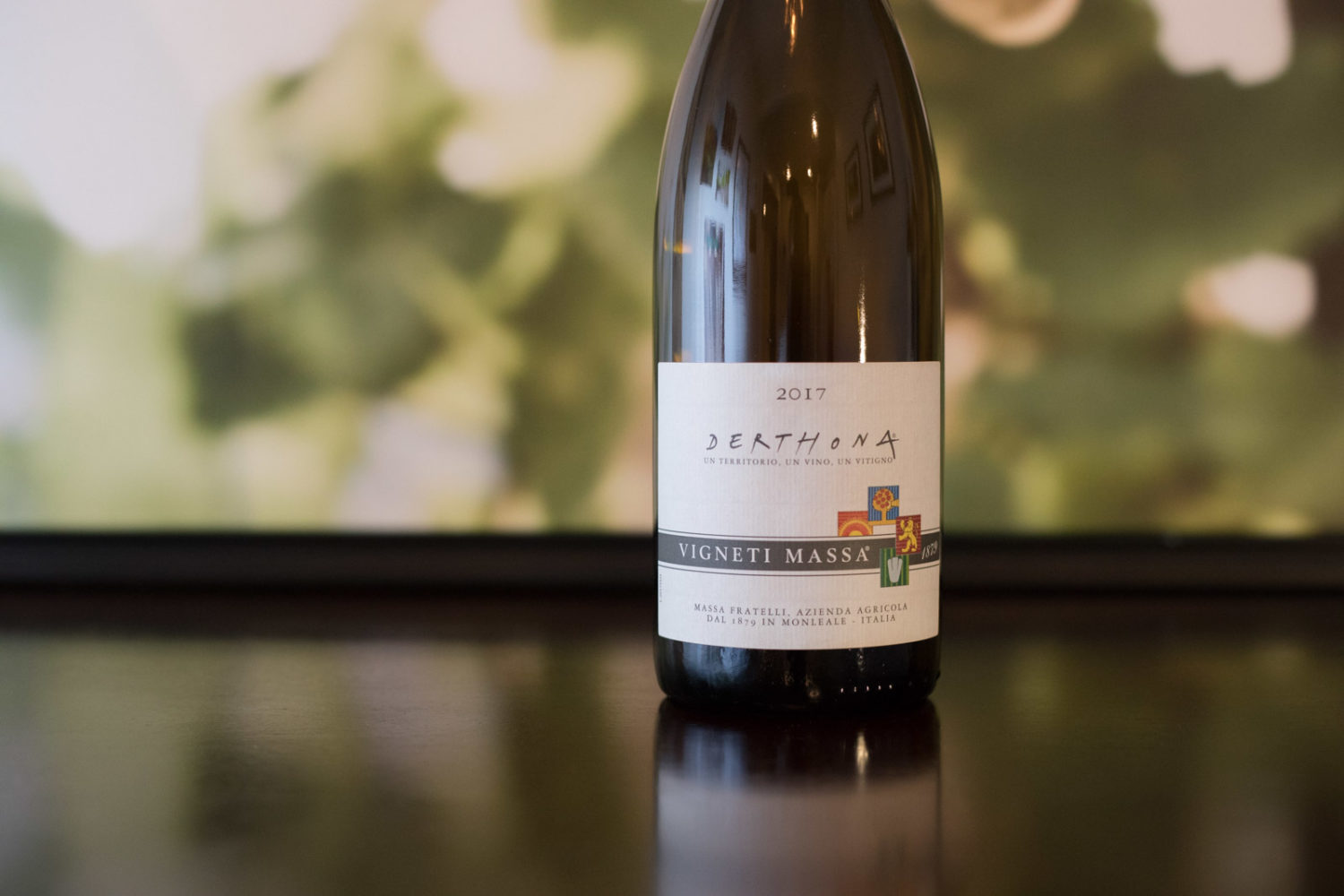
One of the most consistent trends in modern wine is that the future often derives from the past. Ancient techniques are resurrected to give wines added vibrancy, or historic grape varieties are rescued from the dustbin to chart a new and exciting course.
In the case of Piedmont, Italy, the future appears to be less dependent on red wines. No, Nebbiolo is not going anywhere (and neither is Barbera, Freisa or Pelaverga), but the desire to have an age-worthy white to compete with the greats of France and Germany? The producers of Piedmont are clamoring for it.
That future appears to be led by the old soul of Monleale, Walter Massa, whose tireless work with the Timorasso grape variety has proven that Colli Tortonesi is a sound investment for the likes of Borgogno, Vietti, Scarpa, Roagna and Oddero.
Despite its prominent acidity, this is a white wine of subtlety and tannin. Each sip takes a patient moment to kick in and register, and when it does, it conveys a brilliant kaleidoscope of flavors reminiscent of golden fruits, almond and mint. Massa macerates this Timorasso — one of five he makes, and the most available to American buyers — for 2 to 3 days to pull out all that lovely, vernal-toned goodness from the grapes. His contemporaries in Colli Tortonesi are also making exquisite wine, and it is helping Piedmont pull away from the rest of Italy as the country’s most dynamic wine region.
*Learn more about these icons.
Imported by Portovino Italiano
Other Noteworthy Wines We Tasted in This Style/Mood:
- 2018 Vietti Derthona Colli Tortonesi Timorasso
- 2018 Borgogno Derthona Colli Tortonesi Timorasso
- 2018 Ciro Picariello Fiano di Avellino
- 2018 Foradori “Fontanasanta” Manzoni Bianco Vigneti delle Dolomiti
- 2018 Pacherhof Sylvaner Alte Reben Alto Adige-Südtirol
- 2018 Château Feuillet Petite Arvine Valle d’Aosta
- 2015 Domaine de la Borde “Naturé Fondre a Canon” Savagnin Arbois Pupillin
- 2018 Marjan Simcic Brda Classic Pinot Grigio
- 2015 Domaine Guyon “Les Charmes de Mazières” Vosne-Romanée

If you thought it was hard to stomach the cost of Premier Cru and Grand Cru Pinot Noir from Burgundy in 2019, the situation was even worse in 2020 thanks to the U.S. government’s ridiculous, ill-conceived tariffs on French wine under 14% ABV.
An additional 25% on a $200 wine? Next.
Village-level Pinot Noir did not dodge this bullet, but its lower cost had many wine lovers recalibrating their sights for distinctive versions of Village Marsannay, Morey-Saint-Denis, Savigny-lès-Beaune or Pernand-Vergelesses. It would have been a devastating development for Burgundy fans if these wines didn’t measure up to their inflated price tag, but from my experience, the Village-level Pinot Noirs are still better than those found throughout … well, pretty much anywhere else.
This Vosne-Romanée from Domaine Guyon captivated me more than any other Pinot. There was an appealing juxtaposition between smokeyness and floral aromatics, as well as the village’s signature dark brooding fruit, that compelled me to recall the one fortuitous barrel tasting I had in that town. Guyon is a tremendous, but tiny producer. The kind you discover and then want to keep to yourself. (And yet, here I am, telling you to buy Guyon’s Vosne-Romanée).
A quick note: More recent vintages from this winery are under the name Jean-Pierre Guyon, and the “domaine” has been dropped from the label.
*Learn more about these icons.
Imported by Weygandt-Metzler
Other Noteworthy Wines We Tasted in This Style/Mood:
- 2015 Domaine Guyon “Les Bons Ores” Chorey-les-Beaune
- 2017 Joseph Drouhin Chorey-lès-Beaune
- 2017 Domaine Pavelot Pernand-Vergelesses
- 2017 Antoine Lienhardt “Les Plantes Aux Bois” Côte de Nuits-Villages
- 2017 Domaine Joblot “L’Empreinte” Givry 1er Cru
- 2017 Domaine Guillot-Broux “Les Genièvrières” Bourgogne Rouge
- 2018 Tiefenbrunner “Turmhof” Blauburgunder Alto Adige-Südtirol
- 2016 Weingut Carl Ehrhard Rüdesheim Berg Roseneck Spätburgunder
- 2018 Vincent Paris “La Geynale” Cornas
- 2016 Dirupi Valtellina Superiore
- 2017 Castello di Verduno “Basadone” Verduno Pelaverga
- 2017 Benanti Contrada Monte Serra Etna Rosso
- 2011 Calabretta “Vigne Vecchie” Nerello Mascalese Terre Siciliane
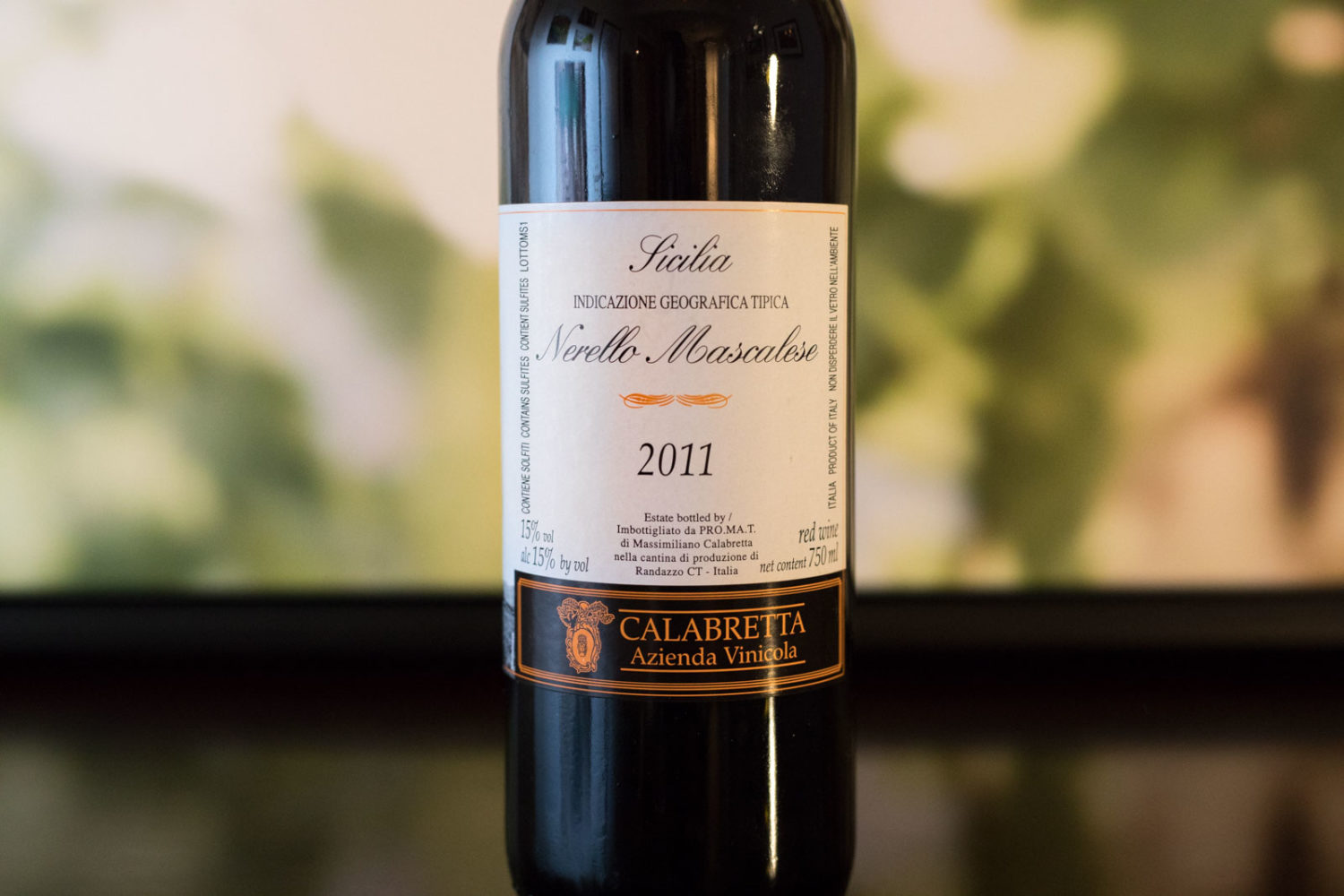
The leap from No. 7 to No. 6 is a seismic one, for this wine and all of those that follow register as some of the finest examples I’ve encountered for their respective categories.
For Calabretta’s “Vigne Vecchie,” that category is the red wines of Etna (I am careful not to say Etna Rosso, because on a technicality, this wine is Terre Siciliane). A traditional producer who must have the patience of a Carthusian monk, winemaker Massimiliano Calabretta not only insists on working with very old vines yielding very little fruit, but he also matures this wine in large oak casks for three years and only releases it after several more years of bottle aging. From Barolo to Tuscany and Abruzzo to Sicily, it’s an approach that many of Italy’s very best producers take (such as the winery at No. 1).
With its fruitful aromatics, “Vigne Vecchie” seemed to possess every variety of cherry that has ever graced the earth: bing, black, Rainier, Morello. As I dug a little deeper, things shifted toward blueberries, orange peel, sweet violets, vanilla bean and cocoa, followed by Etna’s ashy signature etched on the finish.
But perhaps the most distinguishing feature of Calabretta’s slow-and-steady approach to wine can be found in the acidity. Etna’s reds often have a razor’s edge to them in youth, thanks to the volcanic terroir and Nerello Mascalese’s naturally high acidity. But because of “Vigne Vecchie’s” advanced age at release, we get a red wine in full bloom: everything integrated, balanced and polished for presentation.
*Learn more about these icons.
Imported by Polaner Selections and Volio Imports
Other Noteworthy Wines We Tasted in This Style/Mood:
- 2017 Benanti Contrada Monte Serra Etna Rosso
- 2016 Benanti Etna Rosso
- 2017 I Custodi delle Vigne dell’Etna “Pistus” Etna Rosso
- 2017 Passopisciaro “Contrada R” Terre Siciliane
- 2017 Passopisciaro Etna Rosso
- 2017 Palmento Costanzo “Mofeté” Etna Rosso
- 2016 Tascante Contrada Rampante Etna Rosso
- 2016 Tascante Contrada Pianodario Etna Rosso
- 2015 Fernando Prinicipiano Barolo del Comune di Serralunga d’Alba

The category of Nebbiolo proved to be the most difficult to level for this list. Ultimately, I settled on two slots in the top 10 for Nebbiolo, and until the very last minute, the 2015 Bartolo Mascarello Barolo was in the running for top wine. But then I remembered a few key facets of this publication’s ethos: (a) I am not a wine industry insider here to reinforce what’s already been said. I’m just here treating my readers like they are my wine buddies, in which case, I’d tell you (b) that you don’t need to spend $300 on Bartolo Mascarello when you can spend $50 on Ferdinando Principiano. We are filling a mixed case here, after all.
Please do not misinterpret that as a diss on the former. The Bartolo Mascarello Barolo is a divine wine, and rightly celebrated as the apex of Nebbiolo. In fact, I count that March night at Tavernetta with two Italian wine industry veterans and a bottle of Bartolo Mascarello as one of the absolute highlights of my wine-drinking career. Right up there with tastings at Cognac Lheraud, ARPEPE and Domaine de la Romanée-Conti. As I finished my glass, I said to my dining companions “this wine has everything in exactly the right place.”
And then a week later I uncorked Ferdinando Principiano’s 2015 Serralunga Barolo and noticed the same thing. Was I still high on Mascarello? Was the memory of that wine so powerful that, a week later, it was coloring this Barolo? No. That wasn’t it. Principiano’s wine is just a massive achievement, and a singular wine that — even in youth! — caresses with its suggestions of cherry, raspberry, tilled earth, rose, truffle and leather. As I noted in May’s Nebbiolo Fan Club column, it has “an easy grace that I more often associate with Barbaresco — just with the gravitas and dazzle that only Barolo can provide.” Incredibly, it’s not even the best Nebbiolo I had this year.
*Learn more about these icons.
Imported by Portovino Italiano
Other Noteworthy Wines We Tasted in This Style/Mood:
- 2015 Bartolo Mascarello Barolo
- 2015 Fratelli Alessandria Barolo Monvigliero
- 2015 G.D. Vajra Barolo Coste di Rose
- 2016 Trediberri Barolo
- 2015 Cantina del Pino Barbaresco
- 2009 ARPEPE “Buon Consiglio” Valtellina Superiore Grumello Riserva
- 2016 Tenuta Scerscé “Infinito” Sforzato di Valtellina
- 2015 Sandro Fay “Carterìa” Valtellina Superiore Valgella Riserva
- 2019 Domaine de la Grand Cour (Jean-Louis Dutraive) “Clos de la Grand Cour” Fleurie

This was meant to be a big year on reporting from Beaujolais. In late March, I was headed that way for the Moulin-à-Vent consortium’s unveiling of the new vintage. I had also planned to add a few days to photograph the region and meet producers that had caught my attention. Needless to say, that didn’t happen.
What this home-bound year provided, however, was a taste of Beaujolais at its finest in the form of Jean-Louis Dutraive’s 2019 Domaine de la Grand Cour “Clos de la Grand’Cour” Fleurie. Dutraive is Beaujolais’ Socrates: a noted natural winemaker willing to take any other curious soul under his wing and mentor them in his ways. From this singular plot around his winery, he is able to tease out Fleurie’s quiet, light-bodied potency in so many dichotomous ways: fruity yet savory, mineral yet resinous, polished yet powerful. It took a tremendous amount of will power for me to put the genie back in the lamp and explore it for a second night. Not surprisingly, it was as generous and shape-shifting as before.
This is not only one of the great wines of Beaujolais, it is one of the great wines of France.
*Learn more about these icons.
Imported by Polaner Selections and Old World Imports
Other Noteworthy Wines We Tasted in This Style/Mood:
- 2019 Château Thivin Côte de Brouilly
- 2018 Domaine Thillardon “Les Blemonts” Chénas
- 2018 Domaine Thillardon Moulin-à-Vent
- 2017 Château du Moulin-à-Vent Champ de Cour Moulin-à-Vent
- 2015 Château du Moulin-à-Vent Clos de Londres Moulin-à-Vent
- 2018 Pierre-Marie Chermette “Les Champs-Grillés” Saint-Amour
- 2017 Domaine Guillot-Broux “Les Genièvrières” Bourgogne Rouge
- 2016 Ronchi di Cialla Friuli Colli Orientali Ribolla Nero
- 2015 Ciro Picariello “Zi Filicella” Irpinia Aglianico
- 2017 Maison En Belles Lies Bourgogne Aligoté

In the 14th century, Philip the Bold famously banned Gamay Noir from the heart of Burgundy, which in turn allowed the spunky little grape to set up shop just south in Beaujolais. Another misunderstood uveous soul from Burgundy is Aligoté, a white variety of the Pinot family that was similarly ostracized after phylloxera because — get this — it was too hardy. It’s generous nature yielded wines of flat character, and Burgundy had a reputation to uphold.
Wine grapes are like actors and soil is their role. Match them up properly — like Bill Hader in Barry rather than Noelle — and you can have something profound. With better understanding, more patience and a more receptive global marketplace for wine, Burgundy’s winemakers are now spinning Aligoté into something magical.
Maison en Belles Lies has done this with their exotic, intense and fiercely enticing 2017 Bourgogne Aligoté. For me, floral notes have never smelled sweeter on a wine. I often groan about the term “natural wine” and all of its problematic implications, but in this instance, this organic and biodynamic Aligoté brought nature to me. The flowers, the honeycomb, the crushed herbs. I nearly wrote down “fresh air” as a tasting note, I was so transported by its aromas.
Through to the last drop, the wine was mouthwatering and precise. Despite the great Chardonnay, Pinot Gris, Fiano and Timorasso that crossed my path this year, Maison en Belles Lies Aligoté was the most indelible white wine of 2020.
*Learn more about these icons.
Imported by Zev Rovine Selections
Other Noteworthy Wines We Tasted in This Style/Mood:
- 2017 Maison en Belles Lies Santenay Blanc
- 2017 Domaine Guillot-Broux “Les Combettes” Mâcon-Chardonnay
- 2018 Domaine du Roc des Boutires Aux Bouthières Pouilly-Fuissé
- 2019 Château Thivin “Clos de Rochebonne” Beaujolais Blanc
- 2016 Domaine de la Borde “Terre du Lias” Arbois Pupillin
- 2018 Jérémie Huchet “Les Montys le Parc” Muscadet
- 2018 Vietti Derthona Colli Tortonesi Timorasso
- 2018 Borgogno Derthona Colli Tortonesi Timorasso
- 2018 Foradori “Fontanasanta” Manzoni Bianco
- 2018 Château Feuillet Valle d’Aosta Petite Arvine
- 2018 Marjan Simcic Brda Classic Pinot Grigio
- NV Billecart-Salmon Champagne Brut “Sous Bois”
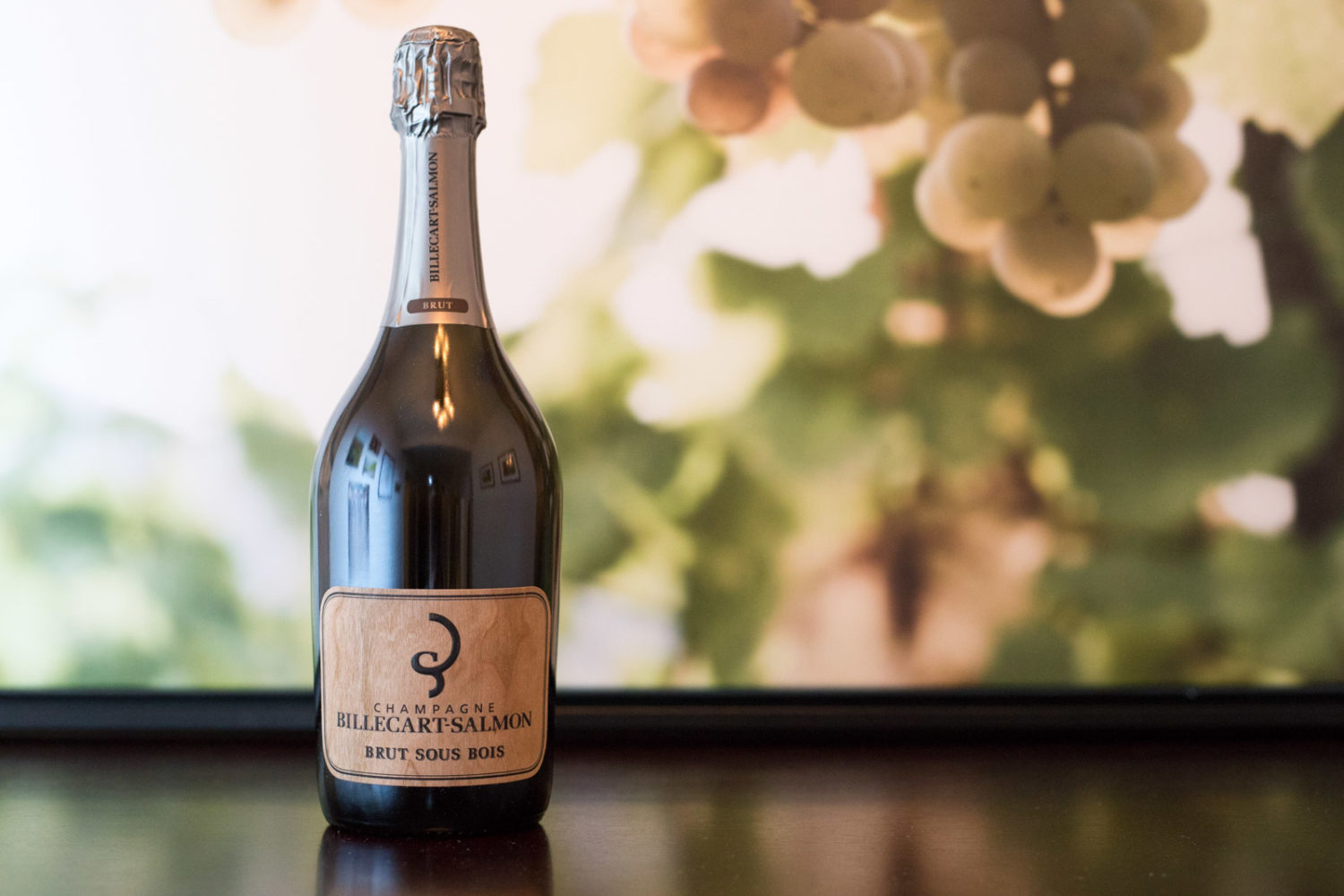
Sometimes you want subtlety. Other times, you just want a wine to be upfront and hit you over the head with its story. Champagne Billecart-Salmon’s Brut “Sous Bois” is definitely the latter — a champagne that aged in oak casks (rather than stainless steel tanks) before its magical transformation of six to seven years on the lees.
The result is akin to hearing a symphony from the front row rather than trying to listen to it on ear buds. This wine reverberates across the senses, with brooding aromas of pear, apricot and toasted seeds, and a richness that is savory and mildly creamy. It made every other sparkling wine this year feel as though I’d just poked around the edges. “Sous Bois” is the real deal.
*Learn more about these icons.
Imported by T. Edward Wines (east) Mexcor International (southwest), Chambers & Chambers (west)
Other Noteworthy Wines We Tasted in This Style/Mood:
- NV Billecart-Salmon Champagne Brut Rosé
- 2014 Barone Pizzini Franciacorta Satèn
- 2014 Barone Pizzini Franciacorta Rosé
- 2009 ARPEPE “Buon Consiglio” Valtellina Superiore Grumello Riserva

Our life in wine is often defined by a pursuit of experience: visiting a hallowed winery, witnessing a harvest, tasting an ancient vintage, pouring over an encyclopedic wine list.
Because of the pandemic this year, that chase was entirely confined to home. From early March onward, I only visited vineyards in the obscure future tense. I formulated an outline for a book on the heroic viticulture of Italy, hatched plans to execute it, and then — as the pandemic morphed into a long-term ice age — I started to lose my gusto for book writing.
What revived my inspiration was a bottle of ARPEPE’s 2009 “Buon Consiglio” Valtellina Superiore Grumello Riserva. On Mother’s Day, I pulled the newly acquired bottle off the rack and stared at it, hesitating with the corkscrew. I say “hesitate” because some memories are so sweet, you don’t want to tarnish them. My visit to this small family winery under a tiered wall of vines in Valtellina in 2017 was one of them. What if the wine wasn’t as I remembered it? What if it had a blemish? A flaw? What if I was opening it too early?
But one cannot be a critic and a fanboy at the same time. I suddenly had to know if this wine lived up to my memory. Or had I created a hype monster in my head because of the wonderful context of that tasting?
Like the Pelizzatti Perego family, the “Buon Consiglio” is a generous soul — a wine that gives and gives and gives. Even Hailey, my wine-reticent spouse, felt compelled to call it “artful.” She could not have chosen a better word, for it’s supple layers and beautiful stoicism were like a canvas fit neatly into a frame. The splashes of paint were like raspberry and graham cracker, star anise and potting soil, blood oranges and petrichor. But those were just my feelings. Anyone could “get” this wine. It didn’t need interpretation or an acquired taste. It transcended all of that.
Suddenly, the book was back on, and a framework for the Valtellina chapter emerged as the long-form First-Taste Guide to Valtellina Superiore. In this year of fits and starts and ceaseless delays, it was absolutely invigorating to get a needed jump-start from a gorgeous Nebbiolo delle Alpi.
Imported by ARPEPE and Skurnik
Other Noteworthy Wines We Tasted in This Style/Mood:
- 2015 Sandro Fay “Carterìa” Valtellina Superiore Valgella Riserva
- 2016 Sandro Fay “Il Glicine” Valtellina Superiore Sassella
- 2016 Sandro Fay “Ca’ Morei” Valtellina Superiore Valgella
- 2016 Dirupi Valtellina Superiore
- 2016 Tenuta Scerscé “Essenza” Valtellina Superiore
- 2015 Aldo Rainoldi Valtellina Superiore Grumello
- 2015 Bartolo Mascarello Barolo
- 2015 Fernando Prinicipiano Barolo del Comune di Serralunga d’Alba
- 2015 G.D. Vajra Bricco delle Viole Barolo
- 2015 Fratelli Alessandria Monvigliero Barolo
- 2016 Trediberri Barolo
- 2015 Cantina del Pino Barbaresco
Reluctantly, I tallied the rough cost of this mixed case of wines: $685 USD. That’s quite a bit and nothing to take lightly. (Also, see my note below on how these wines were acquired). The most expensive wines include Domaine Guyon, ARPEPE, Zind-Humbrecht and Billecart-Salmon. While I might not buy them all at once, I certainly wouldn’t hesitate to add them to my cart or a future cardboard box with 12 slots. Such is the power of obsession. Wishing you all good health and a better 2021.
Note: Some of these wines were provided as samples: Champagne Billecart-Salmon, Ferdinando Principiano, Calabretta, Domaine Guyon, Vigneti Walter Massa, Clos Mogador and Domaine Zind-Humbrecht. Learn more about our editorial policy.

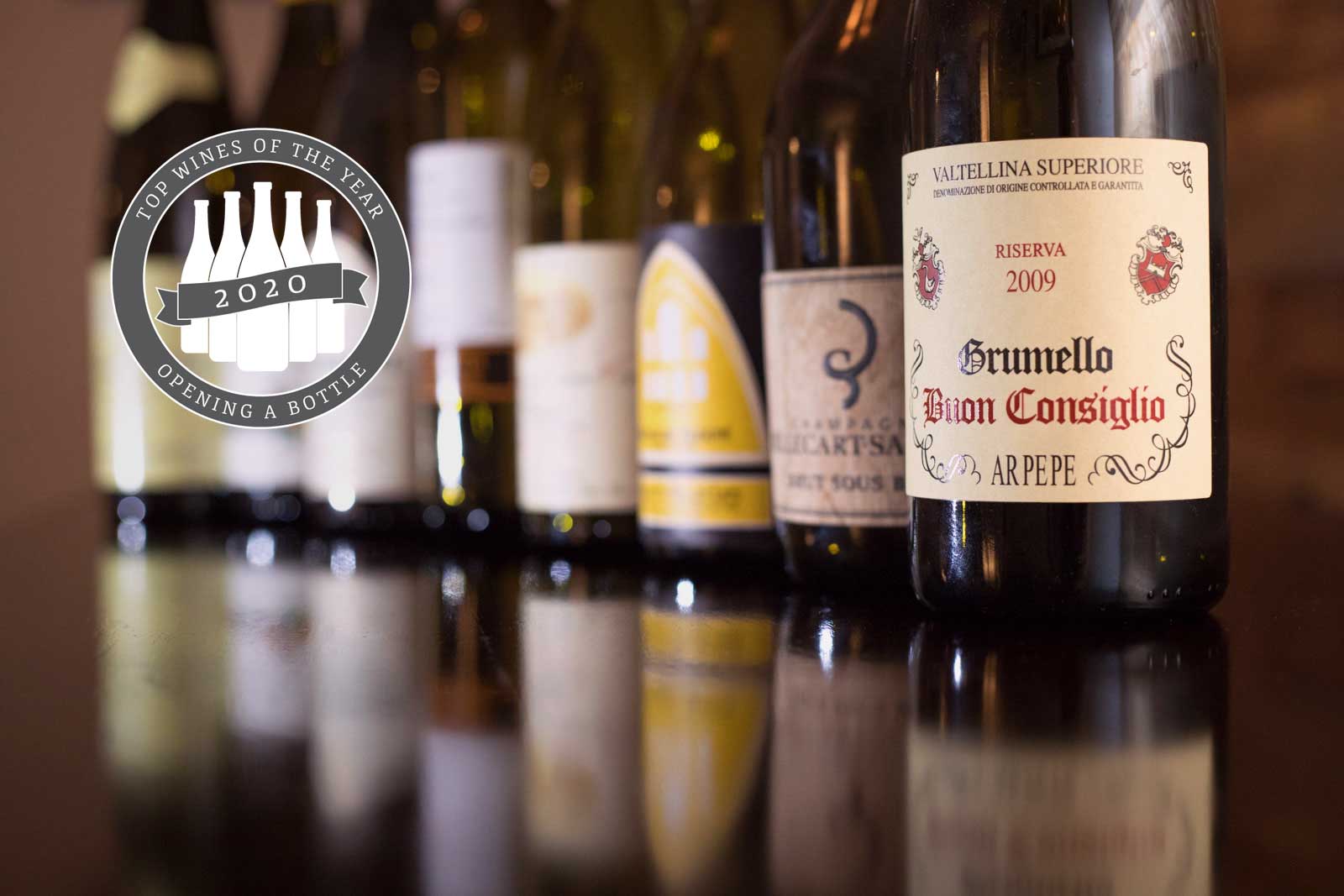
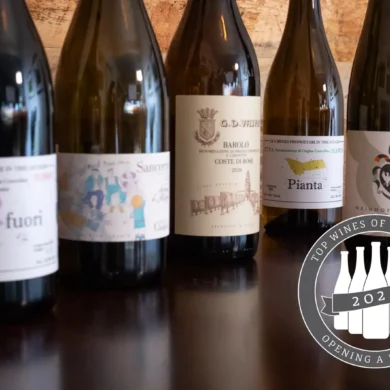


3 Comments